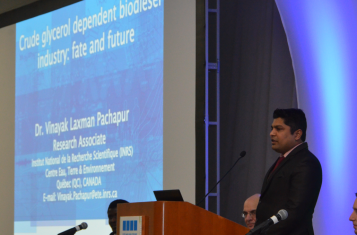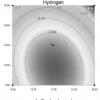
Le doctorat qui devint un brevet

Un doctorat qui contient ou génère des articles, c'est un fait divers.
Un doctorat qui pond un brevet américain, c'est déjà pas mal plus rare.
Un brevet avec un premier auteur doctorant, ça devient franchement original.
Ceci :
Pachapur, Vinayak Laxman (2017). Fermentation du glycérol brut en co-culture pour la production d’hydrogène. Thèse. Québec, Université du Québec, Institut national de la recherche scientifique, Doctorat en sciences de l'eau, 374 p.
a donc abouti à cela :
Achapur V, Sarma SJ, Maiti S, Brar SK, Lebihan Y, Buelna G, Verma M,Das RK (18 mai 2019) Process for hydrogen production from glycerol (USPTO, USA). US10301652. Aussi accessible via GooglePatents https://patents.google.com/patent/US10301652B2/en
Abstract: In a view to uplift the biodiesel industry as a major energy carrier, new approach of utilizing generated waste: crude glycerol (CG) and eggshells (EGS). The properties of eggshells (EGS) as neutralizing and immobilizing agent were investigated for biohydrogen (H2) production using CG by co-culture system. Eggshells maintained the fermentation pH (6.00-6.30) and provided immobilization support for both the bacterial strains. In the scale-up study with semi-continuous bioreactor (7.5 L), H2 production was 7.69 L H2/L of medium with 86.65% glycerol utilization was obtained. Valorization of EGS can reduce the environmental biowaste effects, reduce production cost of H2 by 85-95%, improve H2 yield making biodiesel and H2 industry competitive.
The spent media generated after fermentation can serve as renewable supplement for mixed-culture of H2 production and as media replacement for lipid production. Typical biodiesel industry produces around 3x106 L/year of CG, which can be used into 200 m3 model bioreactor with a closed system of semi-continuous approach using co- and mixed-culture system. The H2 produced (1.47x109 L of H2) can be converted into energy (1.87 x104 GJ) for electricity (1.77 x104 GJ) and heat (4.32 x103 GJ). Using generated spent media (3.7 x1011 L) with 1200 m3 capacity model of microalgae cultivation will produce lipid at 21.55 kg/m3/d to be used as third generation feedstock.
US10301652

